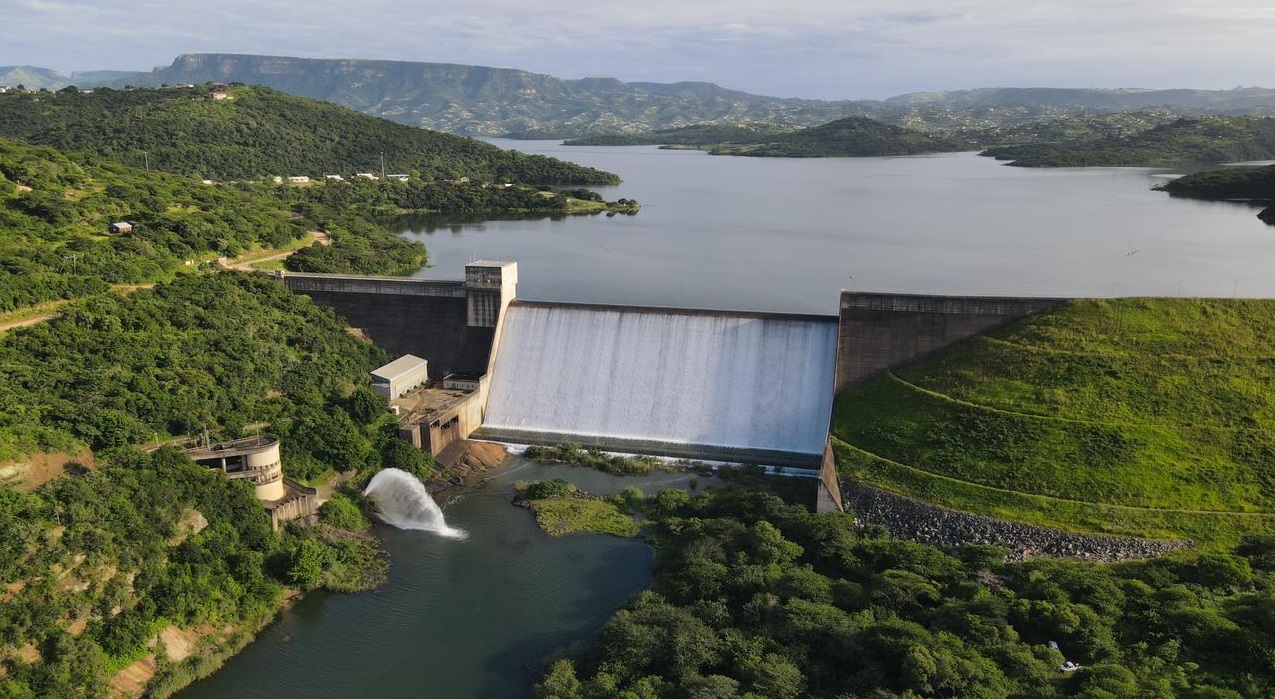[vc_row][vc_column][vc_column_text]STATEMENT: Status of water resources in uMngeni-uThukela Water’s supply area as at Friday, 14th January 2022
Issued by the Corporate Stakeholder Management Unit, uMngeni-uThukela Water
Torrential rains over the past two weeks have had a significant positive impact on the 15 dams that are operated and managed by uMngeni-uThukela Water. On Friday, 14th January 2022, 11 of them continued to overflow, illustrating the strong state of the region’s water resource availability.
For the first time in seven years, Albert Falls – the largest dam in KwaZulu-Natal – exceeded 80%, after gaining 15% in a week. On 8th January 2022, Albert Falls Dam was at 68, 27%; on 14th January 2022, it reached 83, 07%. A year ago, on 15th January 2021, it was at 34, 66%.
Albert Falls, one of six dams in the Mgeni System, has been the recipient of good rains in its catchments and spills from upstream Midmar Dam. Albert Falls Dam provides the water needs of the Durban region through the Durban Heights Water Treatment Works. Water is released from Albert Falls Dam into Nagle Dam and gravity fed through four aqueducts from Nagle Dam to the Durban Heights Water Treatment Works for treatment and supply to eThekwini Water and Sanitation for reticulation to the north, south, central and inner west of Durban.
Month to date rainfall received in the catchments of Albert Falls Dam – from 1st January 2022 to the present – amounted to 108 mm, which is about 40% of the monthly maximum. Good rains are predicted for uMngeni-uThukela Water’s supply area until the early autumn months of 2022.
Four of the other five dams in the Mgeni System – Mearns, Spring Grove, Midmar and Inanda – are at between 100, 58% and 119, 23% and spilling. The exception is Nagle Dam, which is at 93, 56%. Small volumes of water are being released from Albert Falls Dam, which will raise the level of Nagle Dam. Mearns, Midmar, Nagle and Inanda have been at similar levels from a year ago, on 15th January 2021. Spring Gove Dam, however, has made significant gains from a week and a year ago. On 8th January 2022, it was at 92%, against its current 100, 58%. A year ago it was at 67, 54%.
The Mgeni System is the largest system in uMngeni-uThukela Water’s operational area. It supplies the municipalities of uMgungundlovu, Msunduzi, eThekwini and parts of Ugu.
Rainfall received in the Mgeni System from 1st January 2022 to the present:
- Means Dam (Mooi River): 137 mm, which is higher than the monthly average
- Spring Grove Dam: 104 mm, which is also higher than the monthly average
- Midmar Dam: 99 mm
- Nagle Dam: 37 mm
- Inanda Dam: 50 mm
The total collective raw water storage in the Mgeni System is currently at 96%, which means that the amount of water available for treatment and supply to municipalities is in a strong state and there is no risk of shortages occurring in the short-term to medium-term. It is estimated that there is sufficient water available to last another 15 months, well into the coming winter months and beyond. In the next rainfall cycle – September 2022 to February 2023 – water resource availability in storage dams are expected to improve further with rainfall received.[/vc_column_text][vc_btn title=”Download Document” style=”classic” color=”primary” link=”url:https%3A%2F%2Fwww.umngeni-uthukela.co.za%2Fwp-content%2Fuploads%2F2022%2F01%2FStatus-of-water-resources-in-uMngeni-uThukela-Waters-supply-area-.pdf”][/vc_column][/vc_row]
